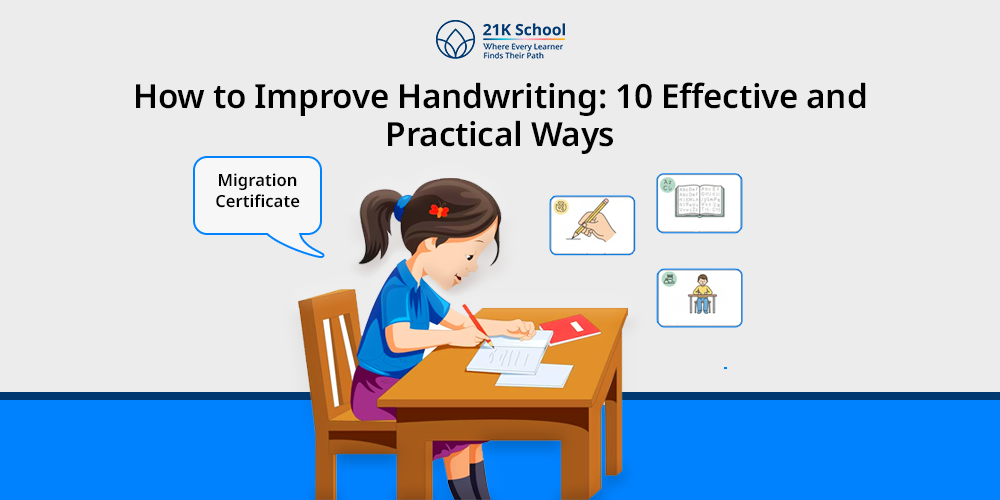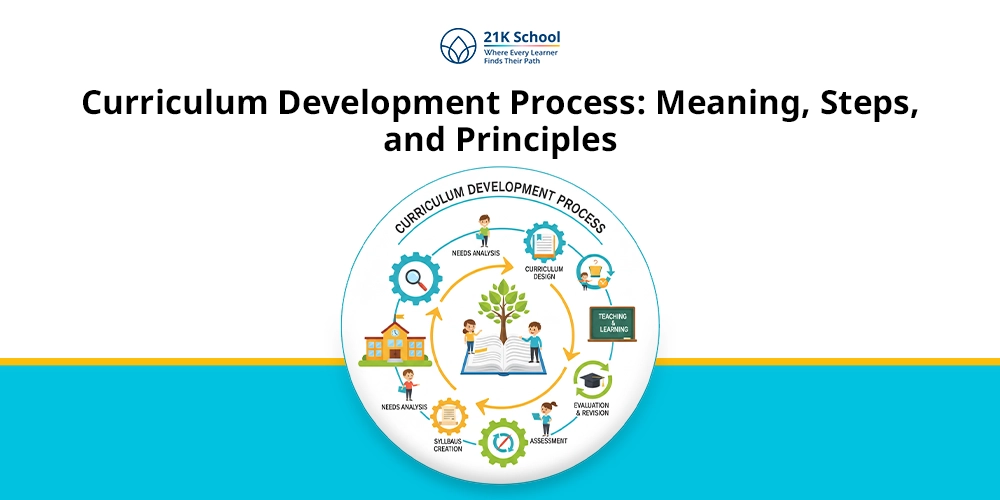
Handwriting is more than a unique way of expressing words on paper through pen or pencil, it is a representation of personality style and attention to detail.
While learning we often forget to focus on correct handwriting. However it’s crucial from a young age to practice handwriting to improve valuable skills.
Good handwriting is a skill that develops in students by consistent practice, right techniques, posture, tools etc that makes it attractive and personalised.
Here we will explore 16 practical ways on how to improve handwriting skills from posture to exercises. Let’s enhance the writing style.
Table of Contents
How to Improve Handwriting – 10 Practical Ways
Given below is a detailed tips and tricks one must follow to improve their handwriting:
1. Correct Posture and Grip
A good handwriting starts with an accurate or correct posture and grip. How to hold a pen while writing is most important.
Sit in a comfortable and straight posture in your study table. Relax and place the notebook at a slight angle of the right hand side to start practicing.
Remember, don’t hold the grip of a pen or pencil too tight. It can create a pressure which impacts the writing style.
For accuracy use only the thumb, index, and middle fingers to hold the pen or pencil.
2. Use the Right Tools
Using the right tool is important for flawless and smooth writing while practicing. Select the desired pen or pencil for effective results.
Ballpoint pens, gel pens or fountain pens are some popular options one can choose. It reduces hand strain and supports long term practice.
Lined or grid notebooks can also be useful for practice especially in initial days.
3. Slow Down While Writing
Most of the kids’ handwriting is messy due to speed writing. In the initial stage rushing in writing letters leads to uneven, and spacing becomes inconsistent.
Starting with slow writing and focusing on each letter and increasing speed by regular practice will give more beautiful and proper handwriting.
4. Focus on Letter Formation
Learners must focus on neat letter formation by paying attention to the size, slant and shape. For example, ensure the height and distance of each word and alphabet.
For young learners writing alphabets in both uppercase and lowercase can be a good start to understand the right size.
Look for perfection while repeating the same letters while practicing.
5. Practice Spacing and Alignment
Equal spacing and alignment is one of the points learners must ensure while practicing or improving handwriting. Poor spacing denotes bad handwriting.
Use of tools like lined paper or graph paper can be an ideal choice. It is helpful for practicing spacing and alignment of writing. During practice learners can shift to un-line pages for improvement.
6. Strengthen Hand Muscles
Fine motor skills are essential for strengthening hand muscles which directly leads to control on writing. Kids with strong fine motor control build stronger and flexible hand muscles.
If a kid feels weakness or stiffness in fingers, daily hand exercises can be beneficial before practicing.
One can also engage themselves in different hand activities for example, drawing, building blocks, playing with clay or ball etc.
7. Consistent Daily Practice
Like any other skills for example communication skills, collaboration skills or problem solving skills, handwriting skills also require regular practice.
Learners can start with giving dedicated 15 to 20 minutes in a day to focus on handwriting practice. Kids can also write a daily diary for practice.
8. Refine Writing Style
Handwriting is not limited to neatness, it is also about personality and consciousness. Once the letters are constant and in proper size start working on different writing styles.
There are different writing styles students can choose as per their desire. Elegant cursive writing is one of the common examples.
Explore is cursive writing allowed in cbse boards.
Start by practicing letters in particular style then words and at last sentence and proceed to paragraph.
9. Experiment with Different Styles
Remember, do not limit only one handwriting style experiment with different styles to understand which suits best.
Some common options one can prefer are cursive, italic, calligraphy, or modern print styles etc. Each style has its own size, technique, angles and alignment.
10. Exercises to Improve Handwriting
Handwriting improvement exercises are implemented by facilitators and parents in students’ daily life. It is to improve their handwriting.
To strengthen learners abilities go through 5 effective exercises to improve handwriting are:
- Tracing Letters and Words
To build and improve muscle memory, tracing letters and words can be an ideal way. Here, students can download handwritten worksheets with dotted letters or words.
Tracing slowly and focusing the size and shape can improve handwriting exercise especially for beginners.
- Writing in Cursive
After accurately and clearly writing each alphabet and word, the learner can start cursive writing style to increase the speed and flow.
Begin with basic cursive or purchase a cursive writing book to understand the uniqueness of each letter.
- Copying Short Paragraphs
Select a short paragraph from an academic textbook, story or poem and copy neatly. Consistence copying leads to improvement in formatting and style.
- Dictation Practice
Reading passages or listening to audio can be an effective way to practice writing skills. Use of Dictation helps in balancing both listening and handwriting.
- Journaling by Hand
Journaling offers an opportunity to manage hand and mind exercises of students. By using a dedicated small notebook for daily practice and properly tracking the progress.
Explore top 8 handwriting tips and tricks.
Conclusion
Improvement in handwriting skills is not a one day task, it requires daily practice and focus.
To improve handwriting learners must go through the above mentioned 10 effective and practical ways as a beginner or intermediate.
Focus on crucial points like posture, using proper tools, practicing letter formation and practising different exercises such as tracing, cursive writing and daily diary writing etc.
It’s time to pick a pen/pencil and focus on continuous practice to improve handwriting skills


